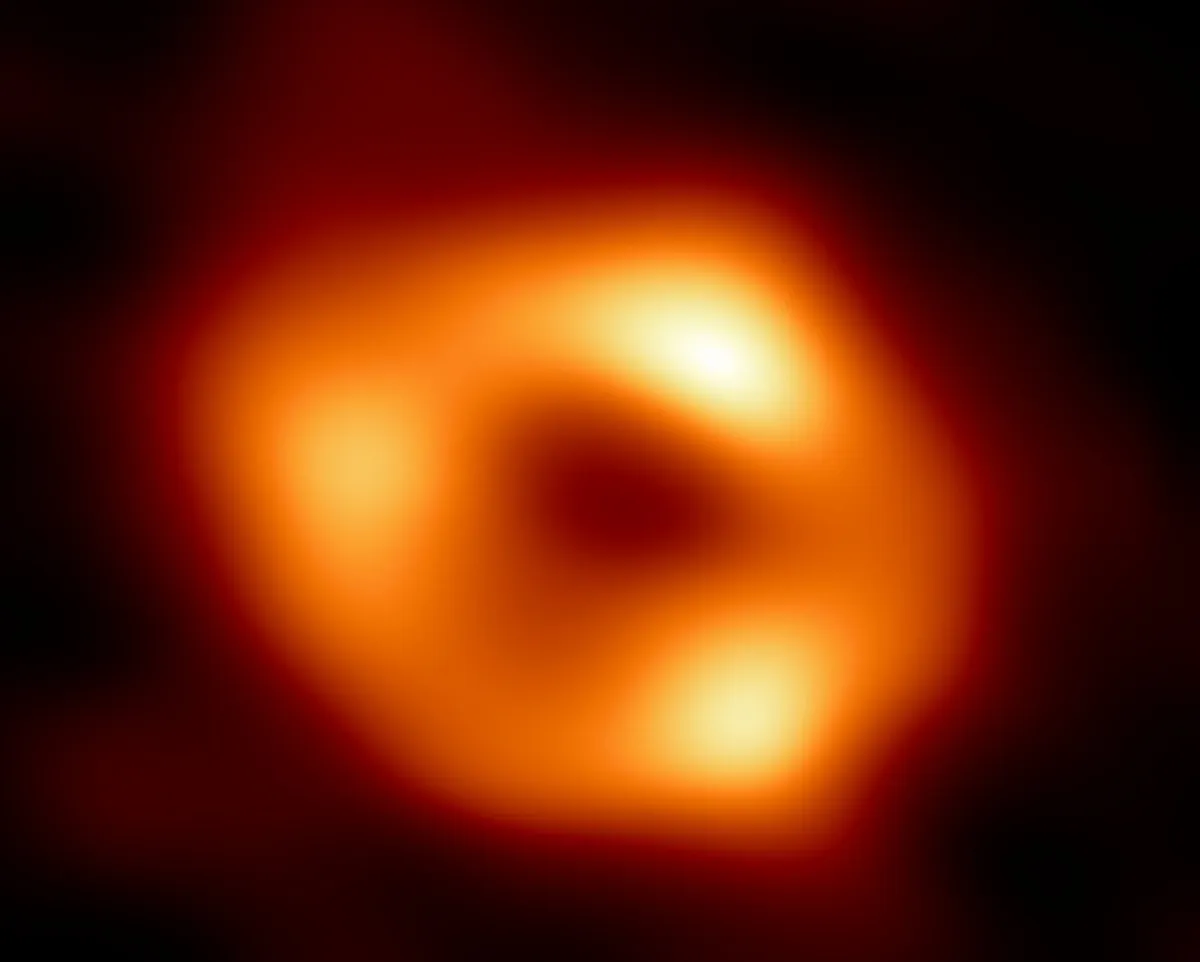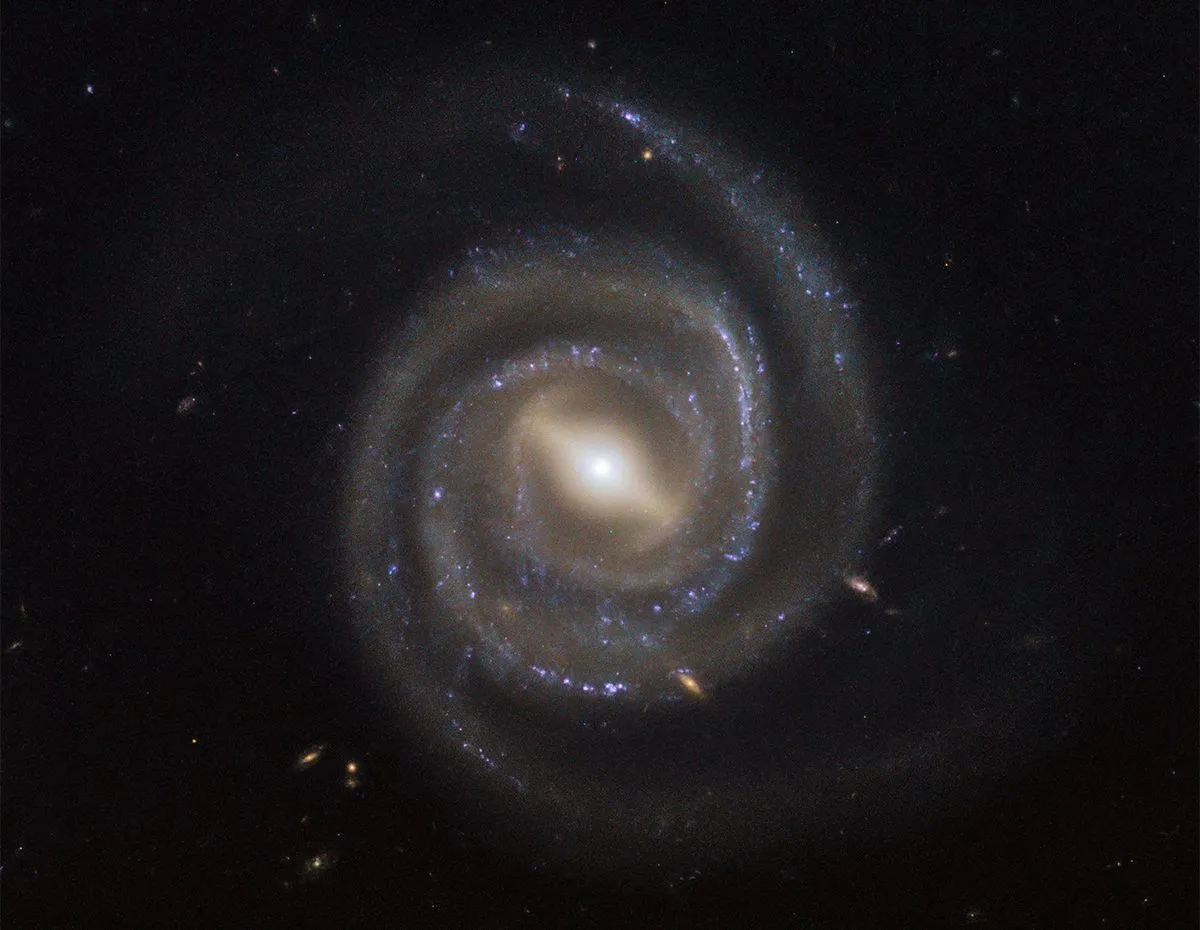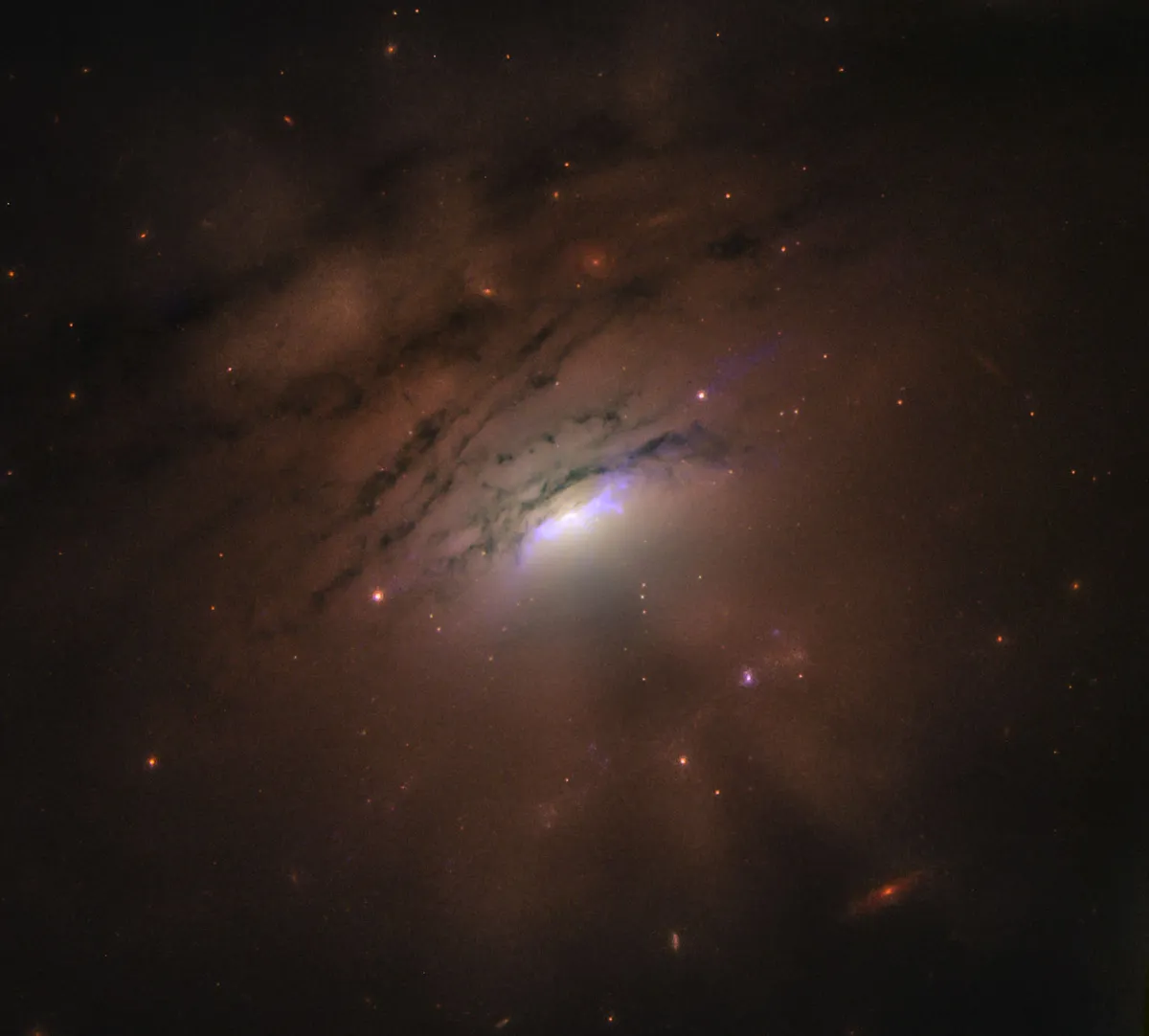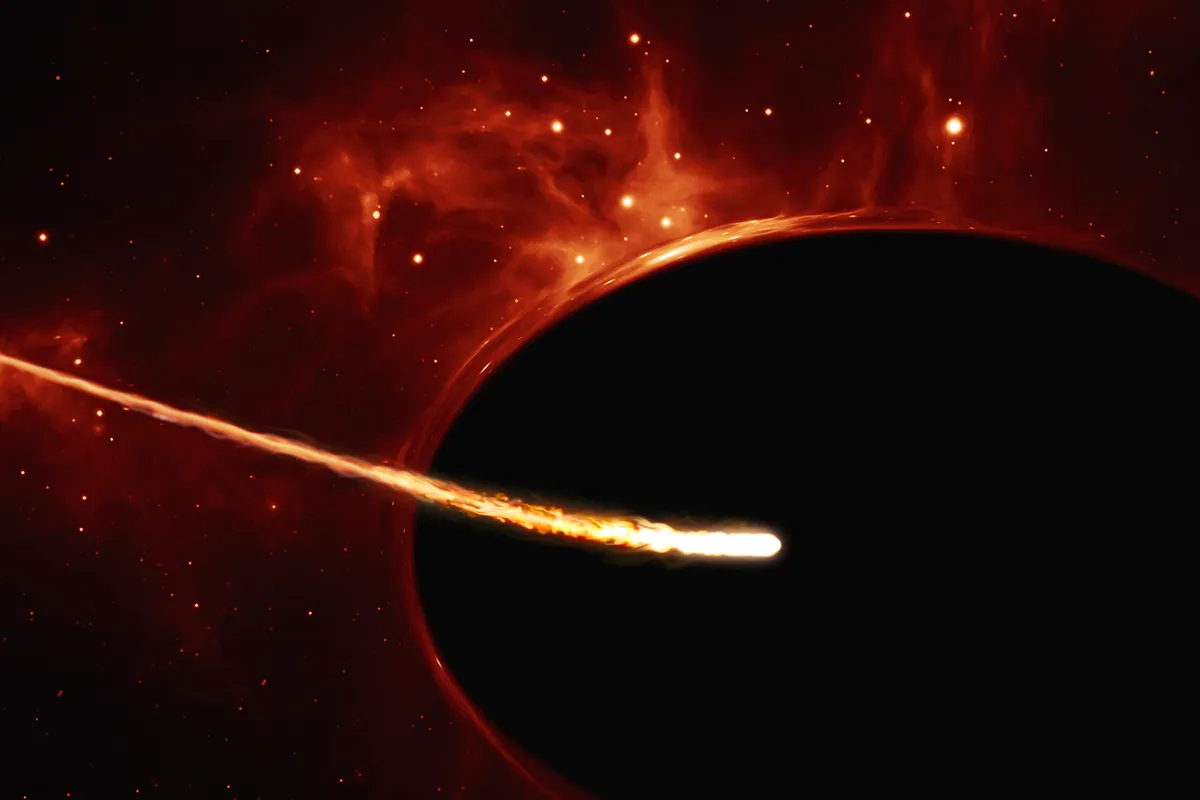Astronomers now believe that a supermassive black hole resides at the centre of most galaxies.
Understanding more about these cosmic behemoths can reveal more about the processes that govern our Universe, from how gravity operates close to black holes, to the formation of galaxies and stellar birth.
In May 2022, astronomers at the Event Horizon Telescope unveiled the first ever image of the supermassive black hole at the centre of our own Galaxy, named Sagittarius A*.
Read more: 11 questions about black holes answered

One longstanding problem regarding supermassive black holes is how they might be halting the process of star formation.
Could these central supermassive black holes actually be preventing new stars being formed at the centres of galaxies?
If so, how can we learn more about this cosmic mystery?
To find out, we spoke to astronomer Joanna Piotrowska at the University of Cambridge, whose field of research is galaxy evolution and the processes preventing star formation in galaxies.

How do supermassive black holes in the centres of galaxies prevent the birth of new stars?
When gas falls onto a supermassive black hole, it settles into an accretion disk due to the angular momentum present in the system.
Matter in these accretion discs becomes hot, reaching temperatures of above one million degrees Centigrade.
This hot gas emits high-energy radiation, which can launch ‘winds’ from the accretion disc that move at high speeds away from the black hole.
These winds can potentially push gas out of galaxies – causing galactic ‘outflows’.
In this way black holes with accretion discs, known together as Active Galactic Nuclei, can potentially remove the fuel needed for future star formation.

What other effects can Active Galactic Nuclei have on a galaxy?
With the help of a galaxy’s magnetic field, supermassive black holes can launch jets of high-energy, charged particles from the accretion discs along the axis of rotation of the black holes.
These jets can interact with the galactic gas, injecting turbulence and heating it up.
The jets extend large distances and can interact with the gas outside their home galaxies too.
They heat that gas up and prevent it from cooling down to accrete onto the galaxies themselves – depriving them of star-forming fuel.
The mechanism through which black holes prevent star formation is unknown, but our research indicates that black holes are likely to kill star formation through a combination of heating and turbulence injection.
These both decrease the reservoirs of gas available for star formation and reduce the efficiency with which the gas collapses to form new stars.

How does a decrease in star formation affect a galaxy?
If a galaxy continues to decrease its star formation rate, it will eventually end up barely forming new stars at all.
It will then continue to exist until previously formed stars reach the end of their stellar evolution cycles.
What this means for our observations of these galaxies is that they will become dominated by old stellar populations and become ‘redder’ in their observed colour.
The decrease in star formation is also associated with the loss of star-forming gas, so galaxies that are not actively forming stars have smooth light distributions.

How do supermassive black holes behave at the centres of galaxies?
We analysed the behaviour of dense, star-forming gas in two simulations – Illustris and IllustrisTNG – and compared it to observations from the Sloan Digital Sky Survey.
We found that Sloan showed both gas reservoirs and star formation efficiency decreases the more massive a black hole is, but none of the simulations was a close match with the observations.
By comparing the observable predictions of different implementations of black hole physics with the observable Universe, we can either rule out or support some models for the interaction between black holes and their host galaxies, which can tell us how supermassive black holes act.
If the observable Universe had been a perfect match with theoretical predictions, we would likely have a correct physical model already at hand.

What’s next for this research?
We are looking at the details of how black holes operate on a galaxy-by-galaxy basis, comparing the IllustrisTNG galaxies with observations of dense gas on a resolved scale in the ALMaQUEST survey of local galaxies.
Here, we will be able to see whether the signatures of black hole operation in the simulation matches the trends in the observations.
If we find striking disagreements between the simulated and observed galaxies, this will inform future theoretical models.
Characterising these differences will help us to understand the details of how black holes prevent galaxies from forming stars at a range of physical scales in and around galaxies.
This article originally appeared in the June 2022 issue of BBC Sky at Night Magazine.
